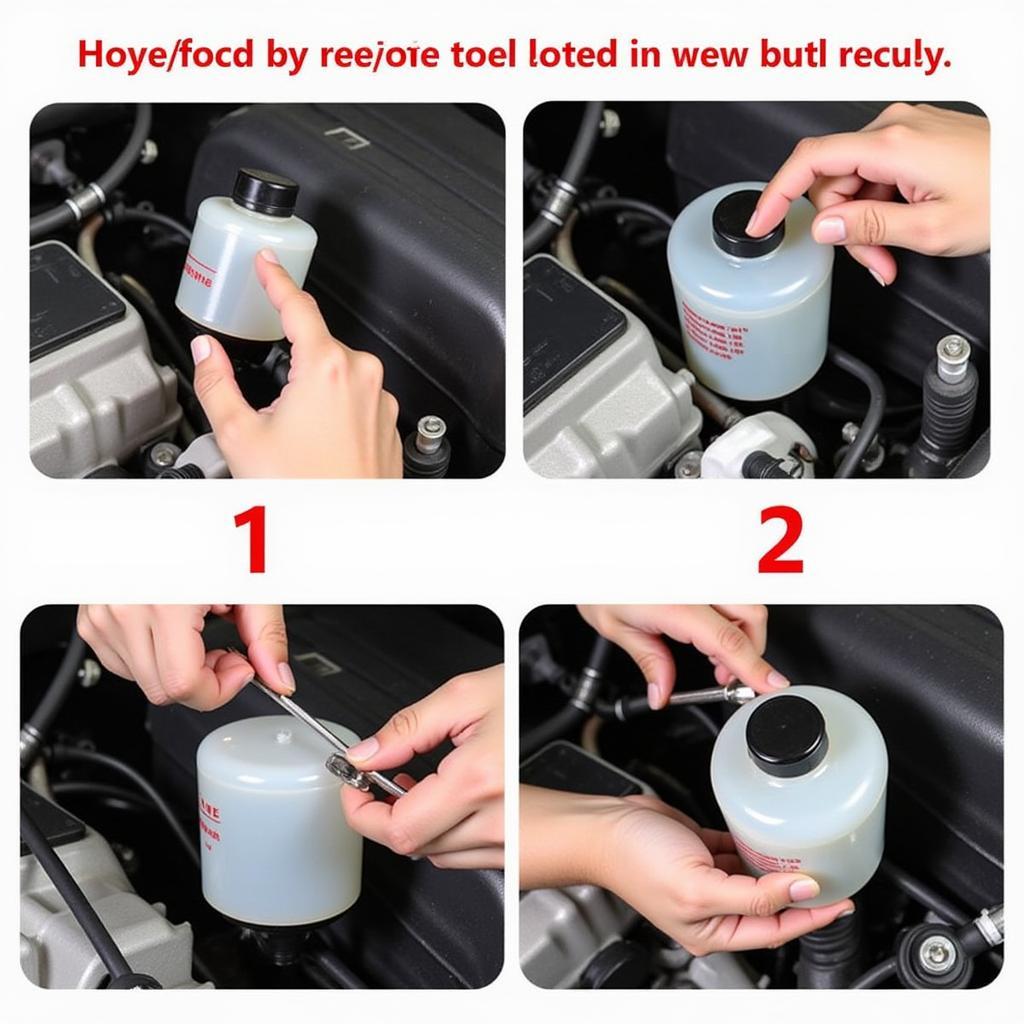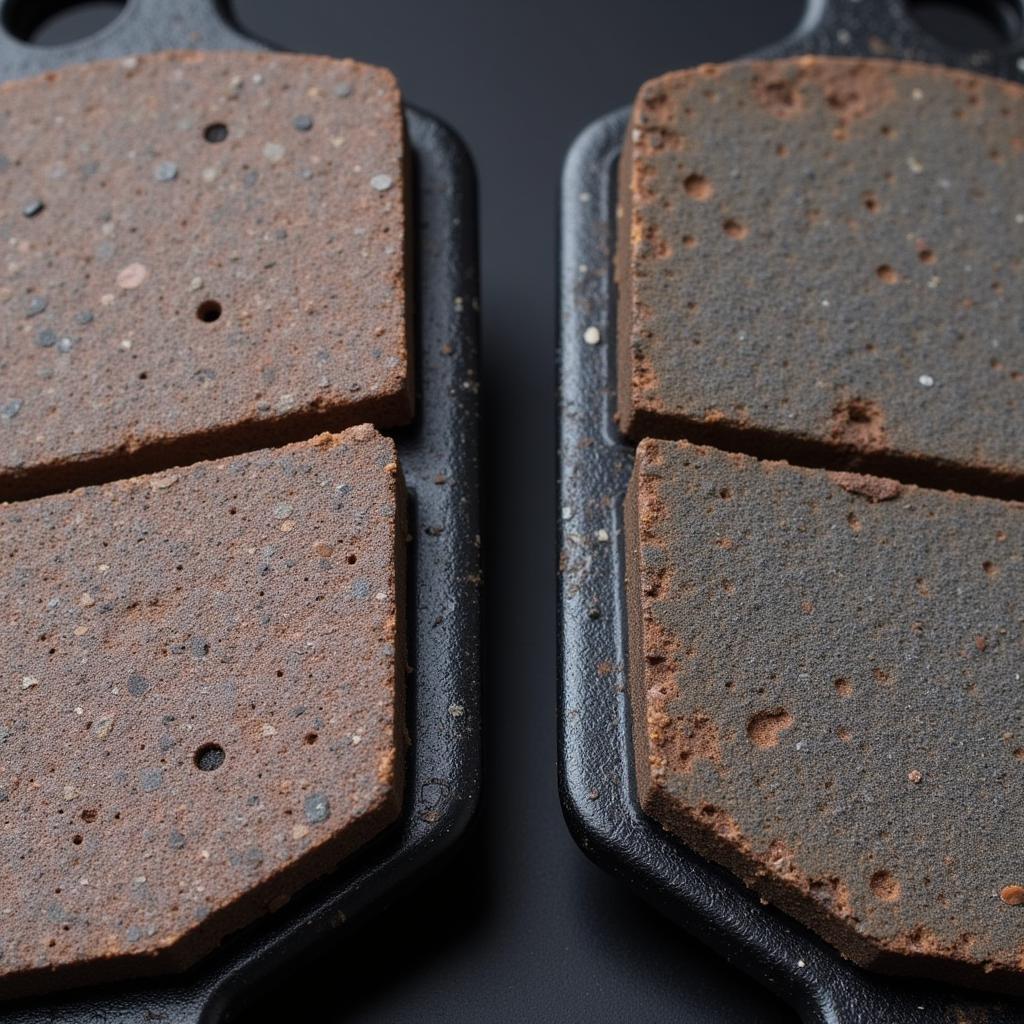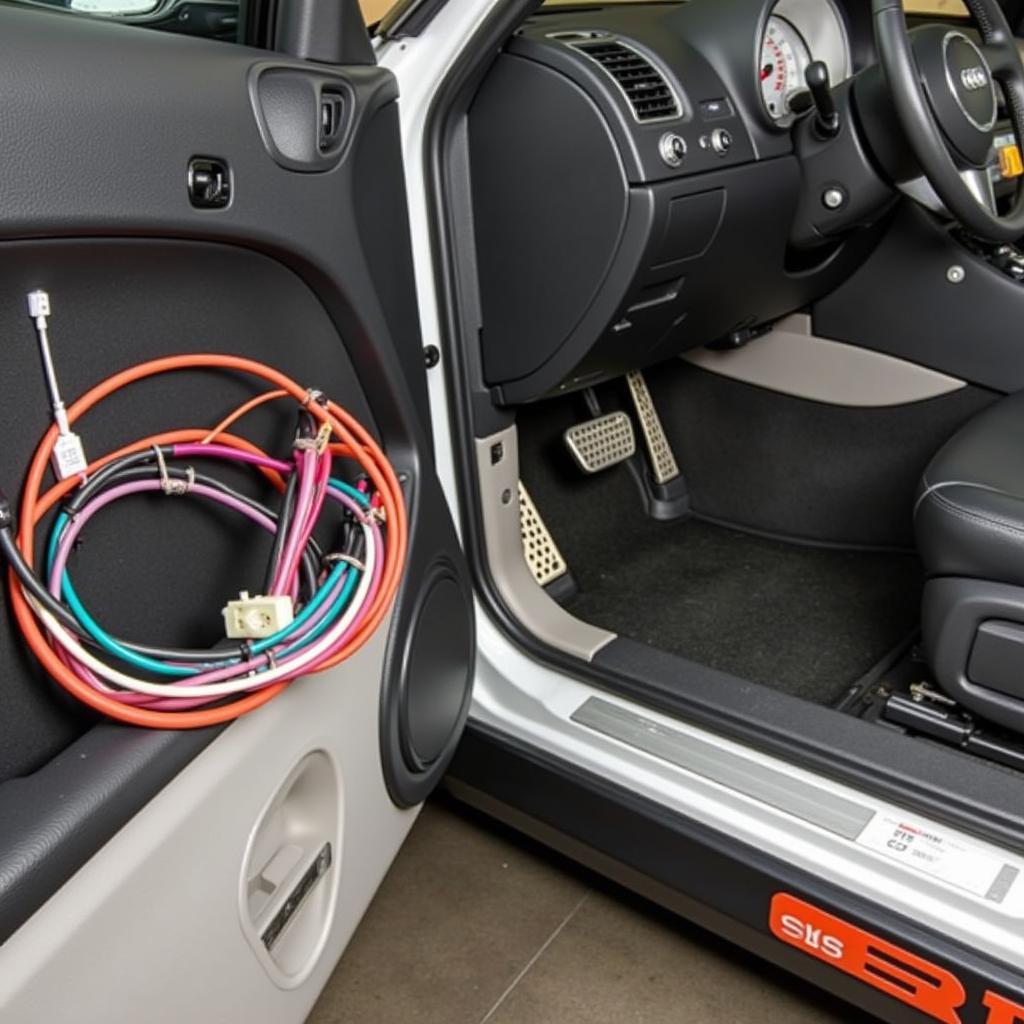The “set brake warning label” can be a frustrating sight for any driver. This article dives deep into the reasons behind this warning, how to diagnose the problem, and the steps you can take to reset it, including remote software solutions. We’ll explore the intricacies of brake systems, common issues that trigger the warning, and offer professional advice from experts in the automotive electrical engineering field. Learn how to address this issue confidently and keep your vehicle safe on the road. See our guide on how to reset BMW brake warning light for more information on a specific vehicle.
Decoding the Set Brake Warning Label
The set brake warning label, often accompanied by a light on your dashboard, indicates a potential issue with your vehicle’s braking system. This could range from something as simple as the parking brake being engaged to more complex problems like low brake fluid or worn brake pads. Ignoring this warning can lead to serious safety risks, so prompt action is crucial. For owners of older BMW models, we have specific guides available such as the 2006 BMW 325i brake pad warning light and the 2001 BMW 325i brake pad warning light.
Common Causes of the Set Brake Warning Label
Several factors can trigger the set brake warning label. One of the most common is low brake fluid. The brake system relies on hydraulic pressure to function correctly, and insufficient fluid can compromise its effectiveness. Another frequent culprit is worn brake pads. As brake pads wear down, they trigger a sensor that illuminates the warning light. Additionally, a faulty brake light switch or a problem with the ABS (Anti-lock Braking System) can also activate the warning.
 Checking Brake Fluid Level
Checking Brake Fluid Level
Diagnosing the Problem
Before attempting to reset the set brake warning label, it’s essential to diagnose the root cause. Start by checking the parking brake. If it’s engaged, release it and see if the warning disappears. Next, inspect the brake fluid level. If it’s low, top it off with the correct type of fluid recommended by your vehicle’s manufacturer. If the fluid level is consistently low, there might be a leak in the brake system, requiring professional attention. Checking the brake lights is also crucial. If they aren’t working, it could be a simple bulb issue or a more complex problem with the brake light switch.
 Worn Brake Pads Inspection
Worn Brake Pads Inspection
Utilizing Remote Diagnostics and Programming
In today’s technologically advanced world, remote diagnostics and programming play a significant role in automotive repair. Specialized software allows technicians to access a vehicle’s computer system remotely, diagnose issues, and even reprogram certain modules. This can be particularly helpful in resolving complex problems related to the set brake warning label, such as ABS malfunctions or sensor errors. Check our guide on the 2001 BMW 325i brake light warning for specific information.
Resetting the Set Brake Warning Label
Once you’ve identified and addressed the underlying issue, you can proceed with resetting the warning label. The reset procedure varies depending on the make and model of your vehicle. Some vehicles have a simple reset button, while others require a specific sequence of actions using the steering wheel controls or the vehicle’s infotainment system. You might find resources like how to reset BMW brake warning light helpful for some models.
Professional Assistance
If you’re unsure about the diagnosis or the reset procedure, seeking professional help is always recommended. A qualified automotive technician can accurately diagnose the problem, perform any necessary repairs, and reset the warning label using specialized tools and software. They can also provide valuable insights into preventive maintenance to avoid future issues. The 2006 BMW 325i reset brake pad warning can provide specific guidance.
Conclusion
The “set brake warning label” shouldn’t be ignored. Promptly addressing this warning is crucial for ensuring your safety and preventing further damage to your vehicle’s braking system. By understanding the potential causes, utilizing diagnostic tools, and following the appropriate reset procedures, you can maintain a safe and reliable braking system. Remember, if in doubt, consult a qualified professional.
FAQ
-
What does the set brake warning label mean? It indicates a potential issue with your vehicle’s braking system, requiring immediate attention.
-
Can I drive with the set brake warning label on? It’s highly discouraged as it indicates a potential safety hazard.
-
How do I reset the set brake warning label? The procedure varies depending on the vehicle, often involving addressing the root cause and sometimes a specific reset sequence.
-
What if the warning light stays on after resetting? Consult a professional technician for further diagnosis and repair.
-
How can I prevent the set brake warning label from appearing? Regular brake system maintenance, including fluid checks and pad replacements, can help prevent the warning.
-
Is remote diagnostics effective for brake issues? Yes, remote diagnostics can help identify complex problems and guide repairs efficiently.
-
What if I’m unsure about resetting the warning myself? Always consult a qualified automotive technician if you have any doubts about the process.

